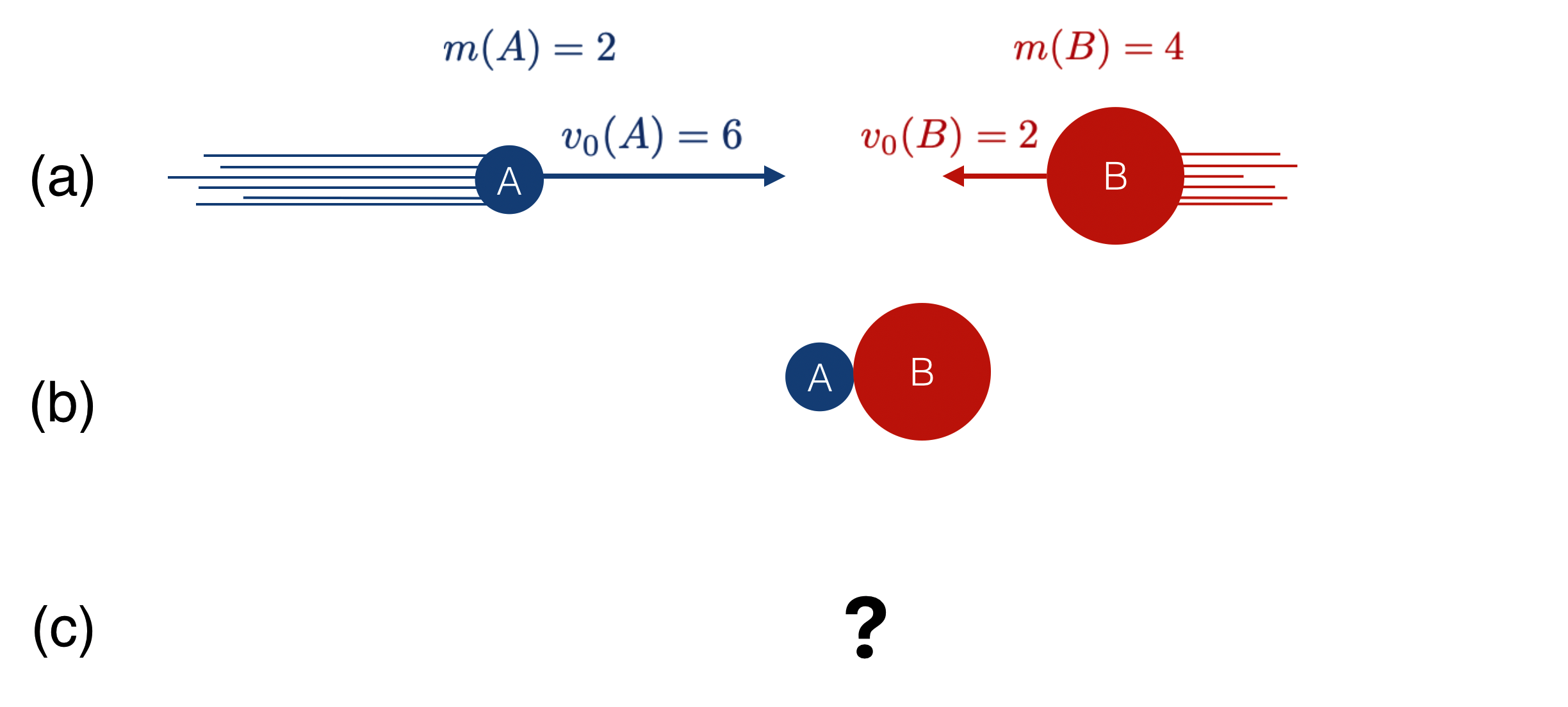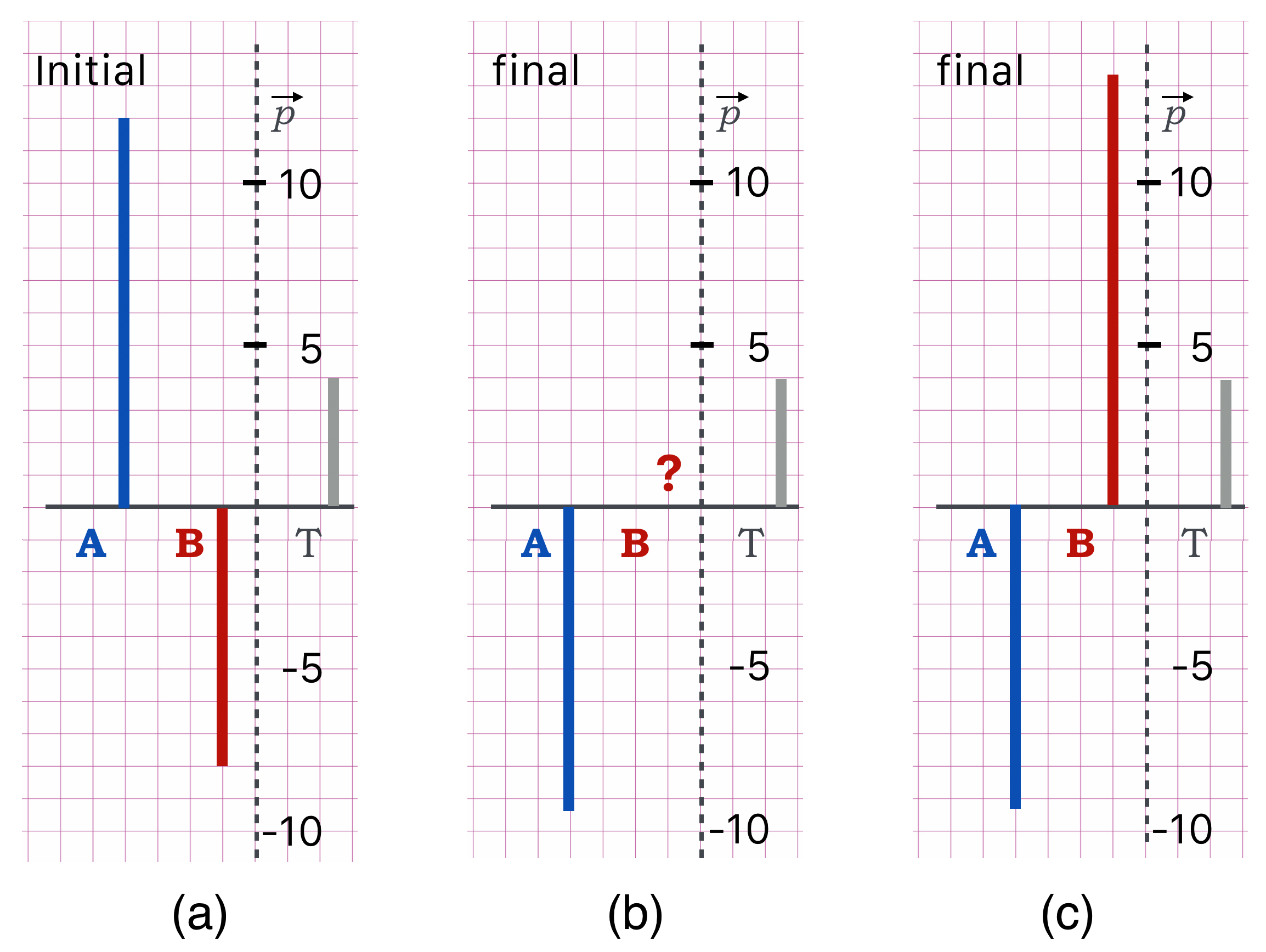Collisions
Example 3: A Real Collision 2:
Angus (we’ll call him , rather than ) is a slight, but quick football safety trying to tackle Buster (), the huge running back. Angus bounces off the lumbering Buster. (It could also be a small car and a large truck, but that's too scary.)
This is not a tackle (because they’d become a single entity in a tackle). Rather this is a bounce in which Angus and Buster will be separate.

Here are the data for this collision, again with fake units:
- and
- and the other way... so if we take 's direction to be positive, then , or since we're in one dimension,
- So,
- and
The final piece of data that I'll tell you that Angus'
- final momentum is : so, he bounces back, off of Buster.
The operative football question for the defense, is whether Angus pushed Buster backwards for a loss or does he still carry his momentum forward for a gain.
Questions:
- What's Angus's final velocity?
- What is Buster's final momentum after colliding with Angus?
Answers:
- What is 's final velocity?
Our intrepid (courageous!) Angus's final velocity is easy. We know his mass ( and his momentum , so we can get his velocity one of two ways:
calculate it:
or use an area plot. Set up an versus set of axes…draw a horizontal line at the known value of and construct the rectangular area to be the known momentum of :

- What's 's momentum after the collision?
We could create areas and solve this but I think that more insight comes quickest if we use the thermometer approach. Here's our construction:

And, here's my reasoning:
- In (a) I've plotted the initial momenta for each object. Angus with a positive momentum of 12 and Buster with his negative momentum of .
- The total momentum of the Angus-Buster system is the sum, which I can represent as the sum of the two thermometer lines, here the difference since one is negative.
- I can quickly see that the difference of those momenta leaves , which is then the absolute total, . So the combination of the final momenta also have to sum to be that same value–momentum conservation.
- In (a) then, on the right hand side, I’ve put in the thermometer for that difference: .
That’s our initial situation and the key is creating that thermometer as the total…which has to be the same total in the final state, which is in the middle diagram, (b):
- I know the final momentum, and that's added in (b) and I brought along on the right: because THAT's the statement of momentum conservation!
- So we can construct 's momentum which, when combined with that of will give us again.
- That's shown in (c). Count up the squares for and you'll see that
With pictures I'm solving the momentum conservation equations:
Either approach is fine!